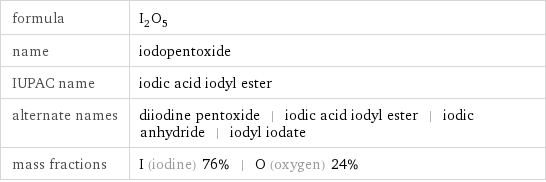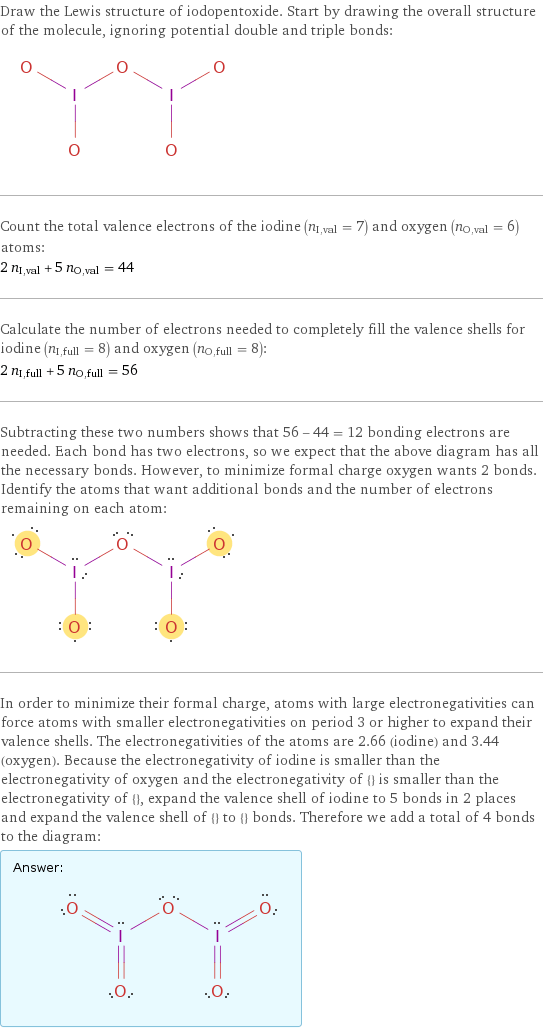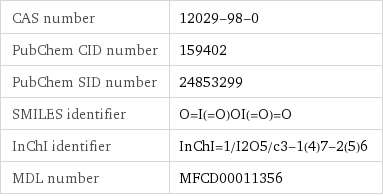Input interpretation

iodopentoxide
Chemical names and formulas

formula | I_2O_5 name | iodopentoxide IUPAC name | iodic acid iodyl ester alternate names | diiodine pentoxide | iodic acid iodyl ester | iodic anhydride | iodyl iodate mass fractions | I (iodine) 76% | O (oxygen) 24%
Lewis structure

Draw the Lewis structure of iodopentoxide. Start by drawing the overall structure of the molecule, ignoring potential double and triple bonds: Count the total valence electrons of the iodine (n_I, val = 7) and oxygen (n_O, val = 6) atoms: 2 n_I, val + 5 n_O, val = 44 Calculate the number of electrons needed to completely fill the valence shells for iodine (n_I, full = 8) and oxygen (n_O, full = 8): 2 n_I, full + 5 n_O, full = 56 Subtracting these two numbers shows that 56 - 44 = 12 bonding electrons are needed. Each bond has two electrons, so we expect that the above diagram has all the necessary bonds. However, to minimize formal charge oxygen wants 2 bonds. Identify the atoms that want additional bonds and the number of electrons remaining on each atom: In order to minimize their formal charge, atoms with large electronegativities can force atoms with smaller electronegativities on period 3 or higher to expand their valence shells. The electronegativities of the atoms are 2.66 (iodine) and 3.44 (oxygen). Because the electronegativity of iodine is smaller than the electronegativity of oxygen and the electronegativity of {} is smaller than the electronegativity of {}, expand the valence shell of iodine to 5 bonds in 2 places and expand the valence shell of {} to {} bonds. Therefore we add a total of 4 bonds to the diagram: Answer: | |
Basic properties

molar mass | 333.804 g/mol density | 5 g/cm^3
Units

Chemical identifiers

CAS number | 12029-98-0 PubChem CID number | 159402 PubChem SID number | 24853299 SMILES identifier | O=I(=O)OI(=O)=O InChI identifier | InChI=1/I2O5/c3-1(4)7-2(5)6 MDL number | MFCD00011356